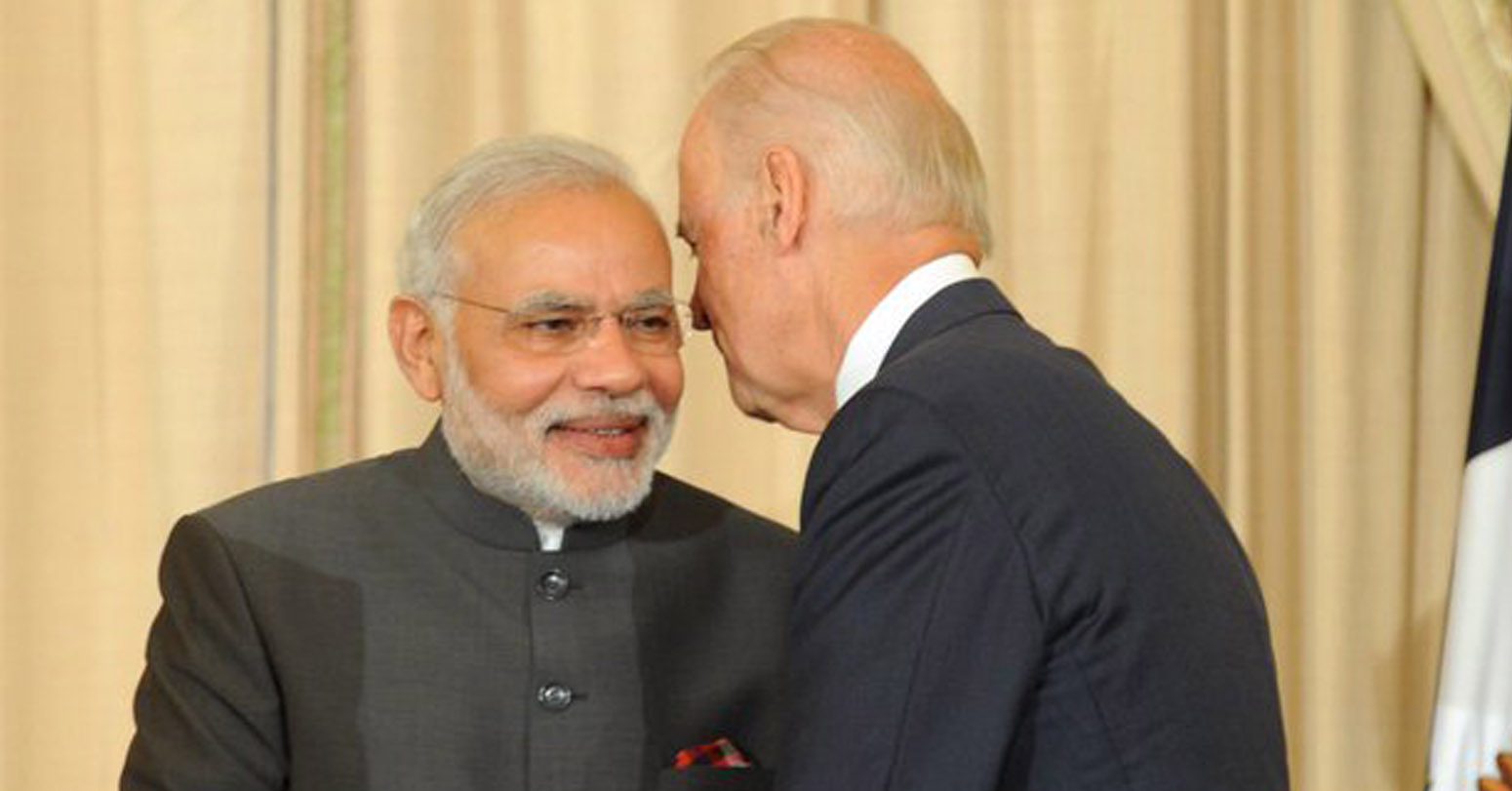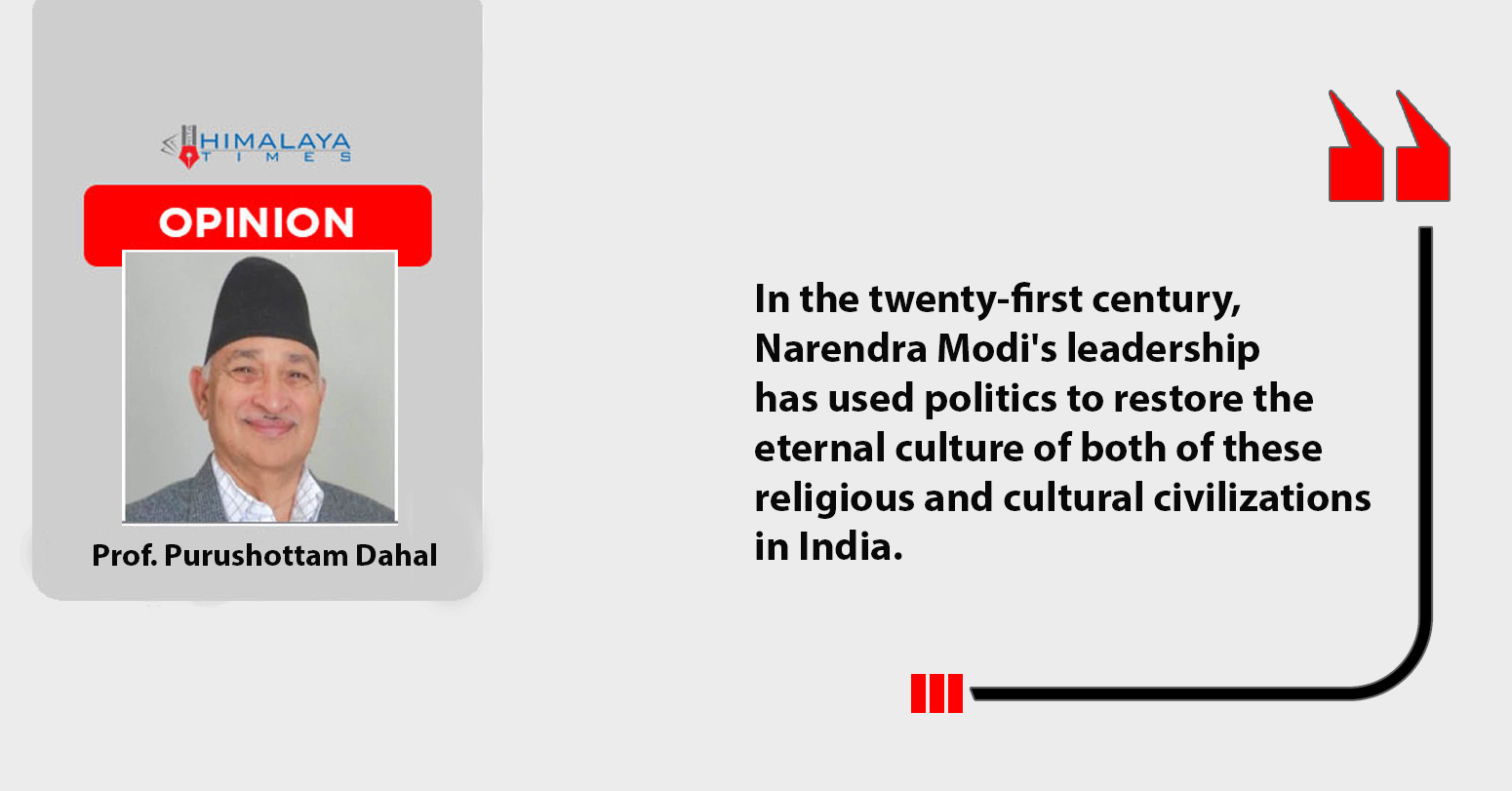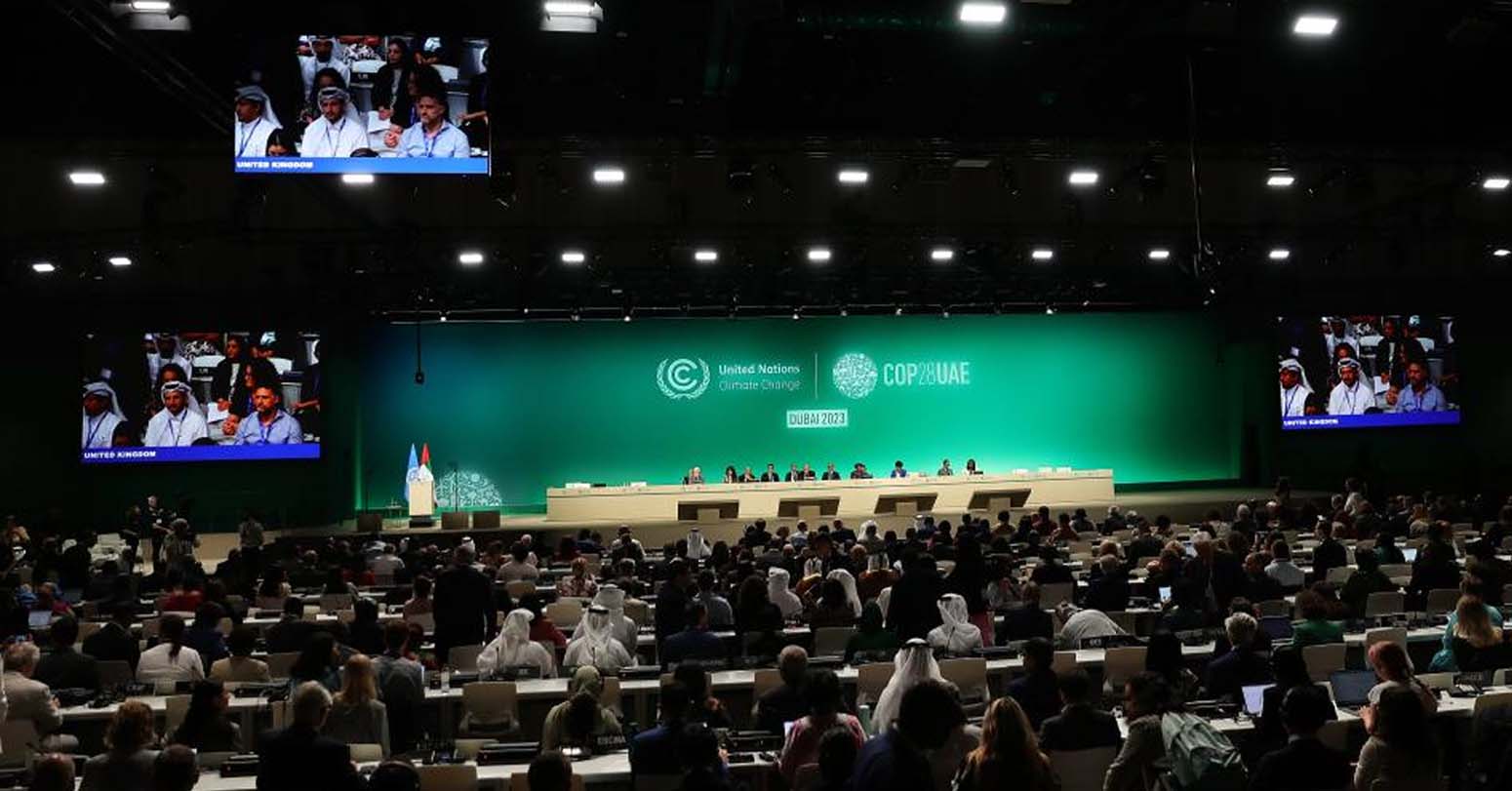- Tara Kartha
Alot of exciting things have been happening with regard to India-US relations, and it seems there are many more in the pipeline in the run-up to Prime Minister Narendra Modi’s visit to the US on 21 June. A lot of effort is being put into removing roadblocks in Delhi even as US officials literally ‘broke china’ to secure the vital General Electric aircraft engine deal through various departments. This deal matters immensely in terms of future technology commitments, while the highly coveted invitation to address the US Congress is critical for political signalling, particularly considering the upcoming elections in both countries.
But photo ops and bonhomie can only get you so far. To take that leap forward, what’s needed is to continue working on common interests for the foreseeable future.
That political thing
Indisputably, a US visit would be immensely useful for the Modi government, notwithstanding its high popularity ratings. But this is politics. Every little picture matters to showcase not just the Modi government’s increasing clout but also India as a growing power. US President Joe Biden, too, would want the vote of the Indian American population, which stands at 6 per cent of the total foreign-born population and rising due to high median household incomes.
The bipartisan support for India in the US Congress is partly explained by the fact that large Indian populations live in both Republican states like Texas and Democratic states like California. Besides, India is the source of the second-largest number of international students enrolled in US universities. Moreover, high-skilled Indian nationals receive the majority of employer-sponsored H-1B temporary visas. That counts. There’s also been a major spike in illegal immigration. That’s troublesome, especially when one reason ascribed to this issue is “rising religious and political persecution” in India, an impression that even prominent analysts seem to be adopting.
The upshot, however, is that an organised Indian diaspora is likely to remain an active constituent in the politics of both countries. That’s a new development that matters to the political heads. The problem? Polarisation, caste divisions, and the fact that 10 per cent of Indian Americans are Muslims who are very well organised. In other words, the diaspora is not a unitary block of cheerleaders.
The China thing
At the recent IISS Shangri-La Dialogue in Singapore, the Chinese participant’s only question was about the “accelerating and reinforcing collaboration” between India and the United States. This indicates Beijing’s worry. Deputy National Security Advisor of India Vikram Misri unequivocally stated that India has no intention of entering into any military alliance. “When our friends and partners in India and their sovereignty was challenged and they needed assistance, the United States delivered based on our relationship and our agreement,” added John Aquilino, commander of the United States Indo-Pacific Command.
Now that’s talking, though it will probably make the South Block uneasy. However we may walk a fine diplomatic line, India is the only country with a ‘hot’ border with China. It, therefore, desperately needs a strong defence even while it rather smartly refuses to get drawn into an arms race — which is what China wants — and prefers an employment-generating defence industry.
With future wars likely to be highly technology-intensive, the primary source for India could be the US. For Washington, the basic strategic pitfall is that a China that gobbles up Taiwan would outstrip the US entirely in terms of its combined GDP. It is simply unacceptable, especially as experts forecast US growth at 0.1-1.6 per cent and China’s at 4.8-6 per cent in 2023. The US has to grow, and grow fast, and that lies at the basis of NSA Jake Sullivan’s ideology.
That goal also means Starbucks opening a new store every nine hours in China, and Elon Musk announcing a second assembly line for Tesla batteries in Shanghai. US companies go where the money is. But the reality of a hostile Beijing — which doesn’t balk at the victimisation of foreign companies — has given way to the emergence of a new term: ‘friendshoring’. Political risk analysis fears uncertainty in China, which in 2021 also included apprehensions about India. Investors don’t like wars or internal strife. Europe is still the favourite destination, but by 2019, Vietnam had made the grade with US companies clocking registered capital of more than $10 billion. In turn, Vietnam invested $1.06 billion in 208 projects in the US as of mid-2023.
India may be a late entry, but its recent massive purchases, such as 220 Boeing aircraft, will create a million jobs across 44 states in the US, according to Biden. Furthermore, an industry study noted that 163 Indian companies invested $40 billion, creating nearly 4,25,000 jobs in the US. ‘Friends with benefits’ is the key. In sum, a two-way street with common interests.
Meanwhile, with China still in play, be ready to go it alone, or almost alone. That’s where defence technology transfer comes in. ‘Aatmanirbhar’ has never been more crucial.
Defence production
The door to joint defence production is now completely closed to China. Having missed out on an industrial revolution, India is still off to a running start with companies such as Tata Aerospace & Defence, and Bharat Forge already involved in lucrative deals with US companies. The former is manufacturing helicopter fuselages and is likely to be a frontrunner for partnering on the GE deal, which will involve a decade-long cooperation for the Tejas Mark2 and future Advanced Medium Combat Aircraft (AMCA).
The point is that the deal itself took nearly 15 years to mature. That has to change.
Meanwhile, Indian majors like the Kalyani Group and Larsen & Toubro (L&T) are primarily focused on manufacturing or building upon existing equipment in the defence arena. L&T, though, has also made forays into shipyards with little government assistance. But none stand tall in defence exports, which makes them junior partners to the US. This does not diminish their importance in the learning curve and potential for future exports. It is to emphasise that despite a slew of agreements from 2005 onwards, including the Defence Technology and Trade Initiative announced in 2012, India remains the largest defence importer in 2023.
Defence exports have certainly increased from Rs 4,682 crore in 2017 to Rs 15,918 crore in 2023. It’s a good beginning, with mostly public sector undertakings (PSUs) doing the heavy lifting. The US wanted trade, and India wanted technology; the former happened, but the latter didn’t. The GE deal can potentially change that over the years, but it also requires Indian industry to measure up.
Time to innovate
India now has the largest innovation and entrepreneurship ecosystem in the world, and that’s what could drive the initiative on Critical and Emerging Technology (iCET). True, Indian companies such as 3rdiTech tied up with California-based defence corporation General Atomics for next-generation computer chips, integrated circuits, and other semiconductor technologies in 2022. The upcoming $3 billion deal for 30 MQ-9 Reaper drones will significantly have Indian components. General Atomics has also tied up with Indian artificial intelligence company 114ai, while the US Air Force executed its first Cooperative Research and Development Agreement (CRADA) with a Bengaluru-based company. Then there is the huge potential for software for new systems, not as backend offices but in innovation.
The Modi government’s Aadhaar mission, after all, is one of the largest in the world. Cooperation should take the Modi government’s $10 billion semiconductor mission forward, with India already home to 20 per cent of the world’s chip designers.
With the US cutting off access to China, this could be a key driver for growth, given the labour-intensive nature of the chip industry. This is also a sector in which India already has an edge, in terms of a flourishing IT industry and allied sectors. The new roadmap on defence cooperation signed recently stressed easing of regulatory hurdles on supply chain security and the Reciprocal Defense Procurement agreement. It also critically set up mechanisms like Advanced Domains Defence dialogue and the India-US defence Acceleration Ecosystem (INDUS-X) to promote the partnership between India and US companies, investors, and academic research.
Getting there
All things considered, this is a turning point in India-US ties. But the relationship needs to be viewed with a hard dose of reality. Will GE transfer complete technology to India? It won’t, and probably never will.
So first, consider reviving programmes like the Kaveri engine, which struggled against tremendous odds, even as our large defence companies climb the technology absorption ladder. Second, despite immense talent innovation, start-ups are struggling with the process-driven approach in India with no clarity on how to get their product to the end user. A platform like Innovations for Defence Excellence (iDEX) for international cooperation would help bring all concerned to the table to provide clarity on eventual commercial exploitation.
Third, as Vrinda Kapoor argues, in China, the chip industry sees close civil-military fusion in development. India’s military needs to be a stakeholder in this vital area, given its inherent ‘dual use’ nature. Fourth, while the private sector pushes ahead, the biggest time lag in the defence sector is the shifting decision-making of the end user. Therefore, the Headquarters of the Integrated Defence Staff (HQ IDS) needs to be tasked with providing a single mandate where applicable, with preferably the man on the ground involved in shaping the project thereafter.
Fifth, for INDUS-X to work, major Indian companies have to vastly increase their R&D budgets to make their presence felt. There’s more — like ensuring that our ‘Silicon Valley’ in Bengaluru at least has water and that Delhi NCR can welcome visitors without choking them to death. China wins because it dealt with its earlier woes. To become a regional power, you have to first look like one. Meanwhile, forget multipolar versus unipolar callisthenics.
The US may or may not come to your aid against China, and so might we shy away from a slugfest. But while Russia still matters in all things defence, its foot is sliding slowly into the enemy camp. Quite simply, we’ve lost a pole to climb on in very muddy international waters. That’s the bottom line. In Washington, just go for it. It’s rah rah time.



















Comprehensive Data Protection Law Critically
Gender Differences In Mental Healthcare
Messi Wins Best FIFA Men’s
Erosion of Democracy
Fly Dubai Catches Fire in
“Complexities of the South Asian